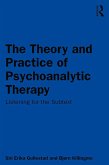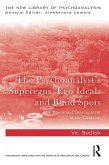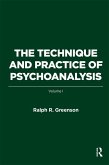The book argues that the therapist must capture both nonverbal affects and unsymbolized experiences, proposing a distinction between structuralized and actualized affects, and covering key topics such as transference, countertransference and enactment. It emphasizes the unconscious meaning in the here-and-now, as well as the need for affirmation to support more classical styles of intervention. The book integrates object relational and structural perspectives, in a theoretical position called relational oriented character analysis. It argues the patient's ways-of-being constitute relational strategies carrying implicit messages - a "subtext" - and provides detailed examples of how to capture this underlying dialogue.
Packed with detailed clinical examples and displaying a unique interplay between clinical observation and theory, this wide-ranging book will appeal to psychotherapists, psychoanalysts and clinical psychologists in practice and in training.
Dieser Download kann aus rechtlichen Gründen nur mit Rechnungsadresse in A, B, BG, CY, CZ, D, DK, EW, E, FIN, F, GR, HR, H, IRL, I, LT, L, LR, M, NL, PL, P, R, S, SLO, SK ausgeliefert werden.
"This book brings us to the core of clinical experience: how to listen to the latent content of our patients' communications and how to make timely interventions that reach deep emotional experiences. Making difficult clinical situations comprehensible it is a textbook that works as a reference book for all psychotherapists. The book provides updated knowledge on advances in psychoanalysis as well as in research on psychoanalysis. It brings profound clinical insights and make psychoanalytic theory clinically useful. This book will be ideal for any training program in psychoanalytic psychotherapy." -Professor Sverre Varvin, Oslo Metropolitan University, Training Analyst and past president of the Norwegian Psychoanalytic Society
"In this book the authors draw attention to an important aspect of the psychoanalytic dialogue, the Subtext. The therapist listens not only to the content but also to the form of the patient's speech - to intonation, mimics and ways-of-being. The book provides detailed examples of how to capture this underlying dialogue, and provide at the same time the theoretical foundation for the therapist's interventions. A distinguishing feature of the book is the interplay between clinical observation and theory. The book is of interest for a wide audience, for university students, psychoanalytic candidates as well as teachers and practicing psychoanalysts." --Susanne Lunn, senior researcher at the University of Copenhagen and former president of the Danish Psychoanalytic Society









